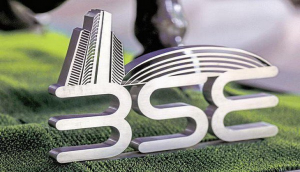
After facing numerous economic hurdles, China finally welcomed IMF's decision to include yuan as its fifth reserve currency on Tuesday but dismissed concerns over depreciation amid economic slowdown in the world's second largest economy.
Including yuan in the Special Drawing Right (SDR) basket as the fifth international legal tender after the US dollar, the euro, the British pound and the Japanese yen, shows the IMF's recognition of China's economic development and reform achievements, China's central bank - the People's Bank - said.
"The joining of RMB (the Chinese renminbi) in the SDR basket means the international community has greater expectations on China to play an active role in the world economic and financial arena," it said in a statement.
China's vision bears results:
Giving a stamp of approval of its being a global economic power, the International Monetary Fund (IMF) yesterday recognised Chinese Yuan as a reserve currency - a long cherished dream for the leadership in Beijing.
IMF Managing Director Christine Lagarde said that this "is an important milestone in the integration of the Chinese economy into the global financial system".
Competition with India?
Such a move from the IMF at a time when the Chinese economy is slowed down and has been overtaken by India in terms of growth rate, is seen by many experts a move by the international body to encourage China for a new set of economic reforms.
"Expectations have already been riding high that the board would formally announce the RMB's inclusion, which implies that a lot of near-term expectations should already be factored into the RMB movement," HSBC said.
Watch the video below to understand what Yuan's inclusion to SDR means:
China's economy in doldrums?
"There is no basis for continued yuan depreciation, and China is capable of keeping the currency basically stable at a reasonable level," China's central bank vice governor Yi Gang told a press conference, citing high-medium growth and foreign exchange reserves as major factors underpinning the currency.
"In case of drastic fluctuation or abnormality in international balance of payments and cross-border capital flow, the central bank will not hesitate to intervene," Yi added.
Applicable from?
The IMF will include the Chinese currency to its SDR basket from October 1, 2016 with a weighting of 10.92 per cent, as the currency has "met all existing criteria".
What is SDR?
Created by the IMF in 1969, the SDR is an international reserve asset created to supplement its members' official reserves. It can be exchanged among governments for freely usable currencies in times of need.
So, how did China manipulate its currency?
The long-awaited outcome came as China has been pushing its currency to wider use on the global stage.
To meet the IMF "freely usable" criteria, Chinese authorities undertook a series of reforms in recent months, such as improving its foreign exchange rate formation system, opening up its interbank bond and forex markets, and improving data transparency by subscribing to the IMF's Special Data Dissemination Standard (SDDS), the report said.
While the immediate benefits of the yuan's SDR entry may be limited, economists have looked beyond the symbolic significance of the label to far-reaching implications for China's economic and financial reforms.
Watch how Bank of China announced IMF's latest decision:
With PTI inputs







![BJP's Kapil Mishra recreates Shankar Mahadevan’s ‘Breathless’ song to highlight Delhi pollution [WATCH] BJP's Kapil Mishra recreates Shankar Mahadevan’s ‘Breathless’ song to highlight Delhi pollution [WATCH]](https://images.catchnews.com/upload/2022/11/03/kapil-mishra_240884_300x172.png)

![Anupam Kher shares pictures of his toned body on 67th birthday [MUST SEE] Anupam Kher shares pictures of his toned body on 67th birthday [MUST SEE]](https://images.catchnews.com/upload/2022/03/07/Anupam_kher_231145_300x172.jpg)






